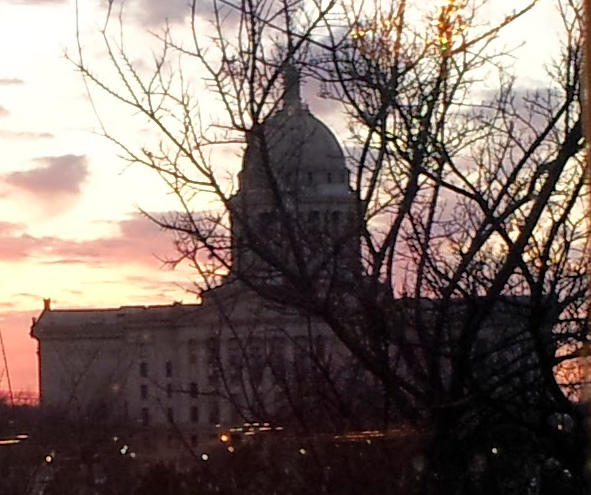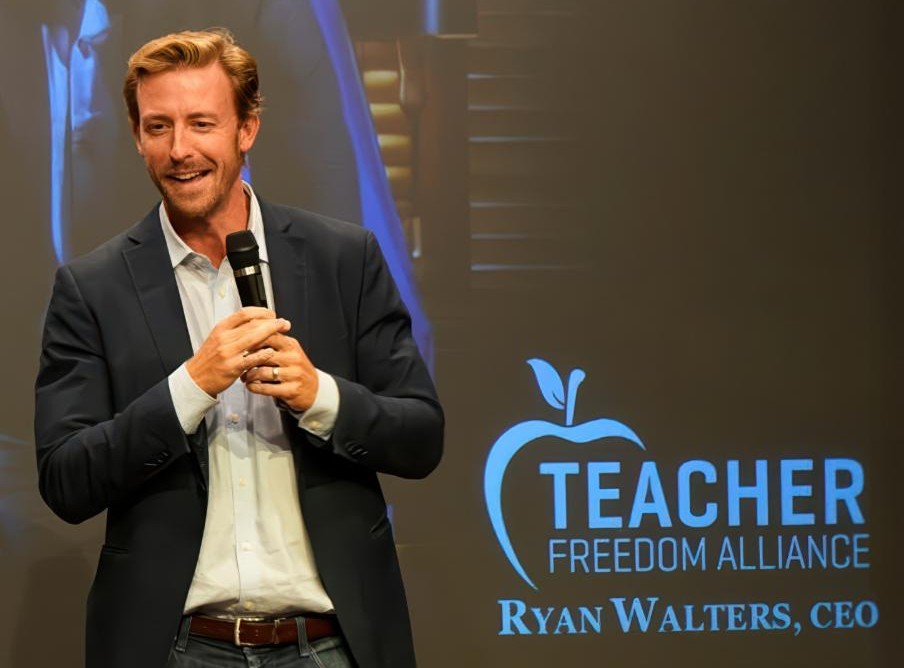Interim Study Shows Danger of SQ 744
The study was requested to examine the potential effects of the passage of State Question 744, also called the HOPE Amendment, which would tie the state's Common Education funding to the regional average set by Oklahoma's surrounding states which include Arkansas, Texas, Missouri, Kansas, Colorado and New Mexico. Last year, the OEA collected more than 230,000 signatures to get the question on the ballot.
"The teacher's union readily admits that this state question would cost millions of dollars, and those funds will not magically appear on trees," said Rep. Leslie Osborn (R-Tuttle), who is the member who requested the interim study. "It is appropriate for Oklahomans to know the full story before they go to the ballot box next fall. This study is not meant to determine the worth of increased education funding, which we all agree is important, but to determine what the fiscal consequences to our state would be if SQ 744 passes."
If approved, the state question will require a diversion of at least $850 million to as much as $940 million per year in state funds to Common Education. In order to fulfill that requirement, lawmakers would likely have to look at income or sales tax increases possibly as high as 40 percent or budget reductions in the other agencies by as much as 20 percent across the board.
Lawmakers may be forced to look at raising tax rates to bring more funds into the state's budget. In order to increase revenue by $850 million, the state income tax rate would have to be increased from 5.5 percent to approximately 7.35 percent, according to the House fiscal staff, or a 34 percent increase overall. Another option would be to raise the state's sales tax rate, which would go from 4.5 percent currently to about 6.2 percent in order to raise the funds necessary to pay for SQ 744, or a 38 percent jump.
If taxes are not raised, the Legislature would have to make funding reductions to the balance of state government. Since Common Education would be excluded from any cuts, the remaining state agencies would see across the board cuts of as high as 20 percent to raise the necessary funds.
Higher Education would have to be cut by as much as $200 million; the Health Care Authority would lose $134 million; the Department of Corrections, $101 million; the Department of Human Services, $97 million; the Transportation Department, $42 million; Mental Health and Substance Abuse, $40 million; and the 72 other appropriated state agencies would be cut by a total of $232 million.
If the measure is approved by the voters, planned roads and bridges wouldn't be built, thousands of prisoners would have to be released, mentally ill Oklahomans would be left without care leaving them destined for the streets or prison, thousands would be dropped from the Medicaid rolls and several health services would be eliminated, fewer state troopers would protect Oklahoma streets, more children and senior citizens would be cut out of state care and college tuition would increase across the state, House members were told by agency directors.
Several agency officials noted that budget cuts forced by SQ 744 would not only eliminate state dollars, but would mean fewer matching federal dollars coming into the state, a fact that will only exacerbate the funding cuts. State Transportation Director Gary Ridley said a $42 million state budget cut to his agency would equate to a total hit of $395 million on the agency's 8-year transportation plan when federal matching dollars are also included.
Chief Operating Officer of the Oklahoma Health Care Authority Mike Fogarty said for every dollar reduced in state money, about $1.75 in federal money will also be lost to his agency. Under the budget cut scenario, the Health Care Authority, which operates the state's Medicaid and Medicare programs, would be cut by about $134 million in state funds, which would have about a $536 million total loss impact when federal dollars are also included, he said.
"While the petitioners of State Question 744 may be well-intended, the question is irresponsible -- it is a zero-sum game where one budget component benefits to the detriment of the other vital state services like transportation, public safety and health care," said Rep. Ken Miller, chairman of the House Appropriations and Budget Committee, which conducted the study.
State Treasurer Scott Meacham also presented the state of Oklahoma's economy during the interim study, saying lawmakers can expect a "very tough" economic year heading into fiscal year 2011. Even without the passage of the state question, the Legislature will likely be forced to cut the state budget.
"Lawmakers need as much flexibility as possible on the spending side to make sure we can account for both the good financial years and those where collections fall below expectations like this year," said Rep. Randy McDaniel (R-Oklahoma City), who is also a member who requested the study.
"If this state question is approved, the people's representatives will not be able to prioritize competing needs and will have no say on the largest single component of the state's budget. Instead education policy will be arbitrarily set by a rigid regional formula," said Rep. Miller. "Voters will decide at the polls whom they want making funding decisions in Oklahoma -- those they elected to represent them at the state Capitol or politicians from other states."
Currently, Common Education already receives 36 percent of the state budget, or $2.4 billion annually. The next closest percentage for a single agency is Higher Education, which receives 15 percent of the budget, and then the Health Care Authority, which receives 10 percent of the budget. If SQ 744 is approved, Common Education's percentage would increase to 49 percent of the state budget, which would effectively remove legislative control of nearly half of the state's budget.
"It's disturbing to think that elected officials will have no control over half of the state's budget," said Brian Downs, Executive Director of Oklahomans for Responsible Government (OFRG). "The OEA is again gambling with the state budget, rolling the dice that revenues will increase in this time of budget shortfalls."
Joel Robison, associate executive director at the OEA, testified to the study committee that the assumption that budget cuts to other state agencies will be needed is unfounded. The OEA used the last 25 years of revenues to justify its claim that the state has an average of 5% growth per year. However, the House fiscal staff later stated that in the last 10 years, the increase has been much lower and would not cover the estimated $850 million cost.
During the OEA testimony, it was revealed that under the provisions of SQ 744, if the regional average for education spending increases, so will Oklahoma's spending, but if the regional average goes down, Oklahoma can NOT reduce spending to meet that lower average. Also, Oklahoma is not included in the calculation of the regional average, only those states that surround Oklahoma which makes the regional average for the calculation higher.
"The level of services to Oklahomans that would have to be cut to accommodate State Question 744 is stark and would be hugely damaging to our state," said House Speaker Chris Benge (R-Tulsa). "Approval of the state question would divert millions of dollars to Common Education, but at what cost with no guarantee of improved achievement results?"
A former Majority Leader in the Kansas House of Representatives, Shari Weber, testified that with a similar mandate in place, their state budget doubled, significant cuts to services were made and the largest tax increase in state history was implemented. Despite this, no significant improvement in student achievement resulted.
State Question 744 is expected to go to a vote of the people next year, most likely on the November 2010 general election ballot.










Latest Commentary
Thursday 30th of October 2025
Thursday 30th of October 2025
Thursday 30th of October 2025
Thursday 30th of October 2025
Thursday 30th of October 2025
Thursday 30th of October 2025
Thursday 30th of October 2025
Thursday 30th of October 2025
Thursday 30th of October 2025